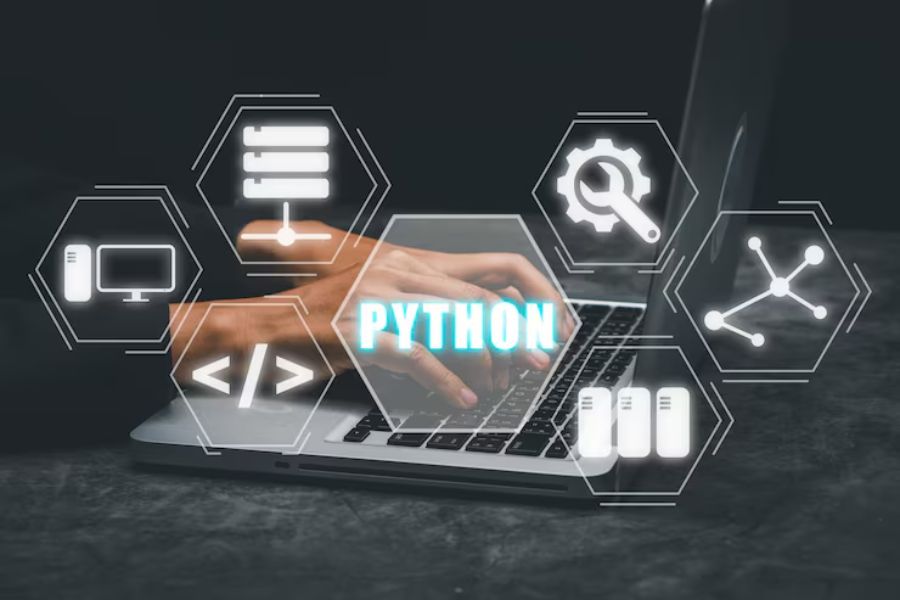Can You Use Python for Web Development? Top Frameworks Explained

Python, widely recognized for its simplicity and versatility, is not just a go-to language for data science and automation but also an excellent choice for web development. Its readability and efficiency make it a favorite among developers for building web applications and websites. When paired with powerful frameworks like Django and Flask, Python becomes even more potent for creating robust, scalable, and secure web solutions. These frameworks streamline the development process, allowing developers to focus on building high-quality applications without compromising performance or security.
In this guide, we’ll dive into how Python can transform web development, highlighting key tools and frameworks you need to get started. Whether you’re new to programming or a seasoned developer, Python offers an accessible and practical approach to web development, empowering you to create dynamic websites and web apps quickly and efficiently.
Can you use Python for web development?
Yes, Python can be used for web development. It is commonly used with web frameworks like Django and Flask, which make it easier to build dynamic, scalable, and secure websites. Python’s simple syntax and versatility make it an excellent choice for both beginners and experienced developers, allowing them to develop web applications quickly.
Introduction to Python for Web Development
Python is a high-level programming language known for its ease of use and readability. Although initially developed for scripting and automation tasks, Python has evolved into a powerful tool for web development. With a rich ecosystem of libraries and frameworks, Python is now widely used for building scalable and efficient websites.
Python’s syntax is straightforward, making it accessible to developers at all levels. This language is particularly effective when paired with web frameworks like Django, Flask, and Pyramid, which provide tools for handling complex web applications efficiently. These frameworks simplify development by providing pre-built components for database handling, form validation, authentication, and routing.
Python’s role in web development has expanded due to its versatility and ease of integration with other technologies like HTML, CSS, JavaScript, and databases. Whether building simple websites or complex web applications, Python offers developers the flexibility to create a wide variety of websites.
Why Choose Python for Web Development?
Python has quickly become a top choice for web development due to its simplicity, powerful frameworks, and scalability. Here’s why Python is a fantastic option for building modern, secure, and efficient web applications.
Easy Syntax and Readability
One of the most compelling reasons to choose Python for web development is its clean and easy-to-read syntax. Python’s simple structure makes it an ideal choice for both beginner and experienced developers. Its readability ensures that developers can write and maintain code quickly, which is especially important for long-term project sustainability. This straightforwardness reduces the learning curve, allowing new developers to get up to speed faster and enhancing collaboration in larger teams.
Robust Frameworks and Libraries
Python offers a wide range of robust frameworks and libraries, with Django and Flask being two of the most popular. These frameworks are equipped with essential built-in features such as user authentication, database management, and URL routing, which significantly accelerate the development process. By leveraging these frameworks, developers can focus more on the application logic and user experience rather than reinventing the wheel for everyday web development tasks.
Scalability and Flexibility
Another key advantage of using Python for web development is its scalability. Python-based web applications are built to handle growth, whether it’s increased traffic or added functionality. As businesses grow, so can their web applications. Major companies like Instagram and Pinterest rely on Python to support millions of users, showcasing its reliability and flexibility under heavy loads.
Security Features
Python’s frameworks, particularly Django, are designed with security in mind. They come with built-in protections against common security threats such as SQL injection, cross-site scripting, and cross-site request forgery. These features help developers create secure web applications without having to implement complex security protocols from scratch, making Python an excellent choice for building safe and robust websites.
Popular Python Frameworks for Web Development
Python’s popularity in web development is mainly due to its powerful frameworks that make building web applications easier and faster. Two of the most popular Python web frameworks are:
- Django: Django is a high-level web framework that encourages rapid development and clean, pragmatic design. It includes built-in features for authentication, content management, and security, which makes it ideal for developers who want to build feature-rich applications.
- Flask: Flask is a micro-framework that provides more flexibility and control over the components you include. It is ideal for smaller projects or for developers who want to have more control over the app structure while still benefiting from Python’s power.
Both frameworks enable developers to build efficient and scalable web applications, with Django being a full-stack framework and Flask being lighter and more flexible.
How Does Python Integrate with Frontend Development?
While Python is primarily used for backend development, it can be integrated seamlessly with frontend technologies to create fully functional web applications. Python’s frameworks work well with frontend technologies like HTML, CSS, and JavaScript.
For example, Django can render HTML templates, and you can use Python to handle requests from the frontend and serve dynamic content to users. Additionally, Python-based web applications can use JavaScript for client-side interactivity, allowing for the development of dynamic user interfaces.
Many Python developers also work with JavaScript libraries such as React or Vue.js to build complex, interactive frontend applications while relying on Python for the backend logic. This flexibility ensures that Python-based web applications can deliver a smooth, seamless user experience.
How Can You Start Using Python for Web Development?
Getting started with Python for web development is an exciting journey that can open doors to creating dynamic and scalable web applications. Here’s a step-by-step guide to help you begin your Python web development adventure, and how long until you can start building projects with Python.
- Install Python: Begin by installing the latest version of Python. Visit the official Python website, download the installer, and follow the instructions for your operating system to ensure you have the most up-to-date version.
- Learn the Basics of HTML, CSS, and JavaScript: While Python is great for backend development, understanding HTML, CSS, and JavaScript is crucial. These technologies are used for structuring, styling, and adding interactivity to your web pages, making your application visually appealing and functional.
- Choose a Python Framework: To simplify the development process, choose a Python framework like Django or Flask. These frameworks provide all the necessary tools and built-in features to help you create dynamic and scalable web applications. They also come with plenty of documentation and community support.
- Build Projects: The best way to learn web development with Python is through hands-on experience. Start by building simple web pages and gradually tackle more complex projects. The time it takes to feel comfortable depends on how much you practice and explore Python web development.
Conclusion
Yes, Python is a powerful and versatile tool for web development. With its simple syntax, robust frameworks like Django and Flask, and excellent security features, Python makes it easy for developers to build scalable and efficient web applications. Whether you’re working on a small website or a large, complex platform, Python provides the flexibility and tools needed to succeed in web development. With its ease of use, scalability, and strong community support, Python remains one of the top choices for developers looking to create user-friendly and dynamic websites.
FAQ’s
Can Python be used for frontend development?
While Python is mainly used for backend development, it can integrate well with frontend technologies like HTML, CSS, and JavaScript to create full-stack applications.
What are the best Python frameworks for web development?
Django and Flask are the two most popular Python frameworks. Django is a full-stack framework, while Flask is a lightweight framework ideal for more flexible projects.
How do I start learning Python for web development?
To start learning Python for web development, install Python, learn the basics of HTML, CSS, and JavaScript, and choose a Python framework like Django or Flask to build projects.
Is Python suitable for large-scale web applications?
Yes, Python is highly scalable and suitable for large-scale web applications, especially when using frameworks like Django, which are designed to handle heavy traffic and complex functionality.
Can Python be used for real-time web applications?
Yes, Python can be used for real-time web applications by using technologies like WebSockets or integrating with JavaScript libraries to provide live updates and interactivity.
